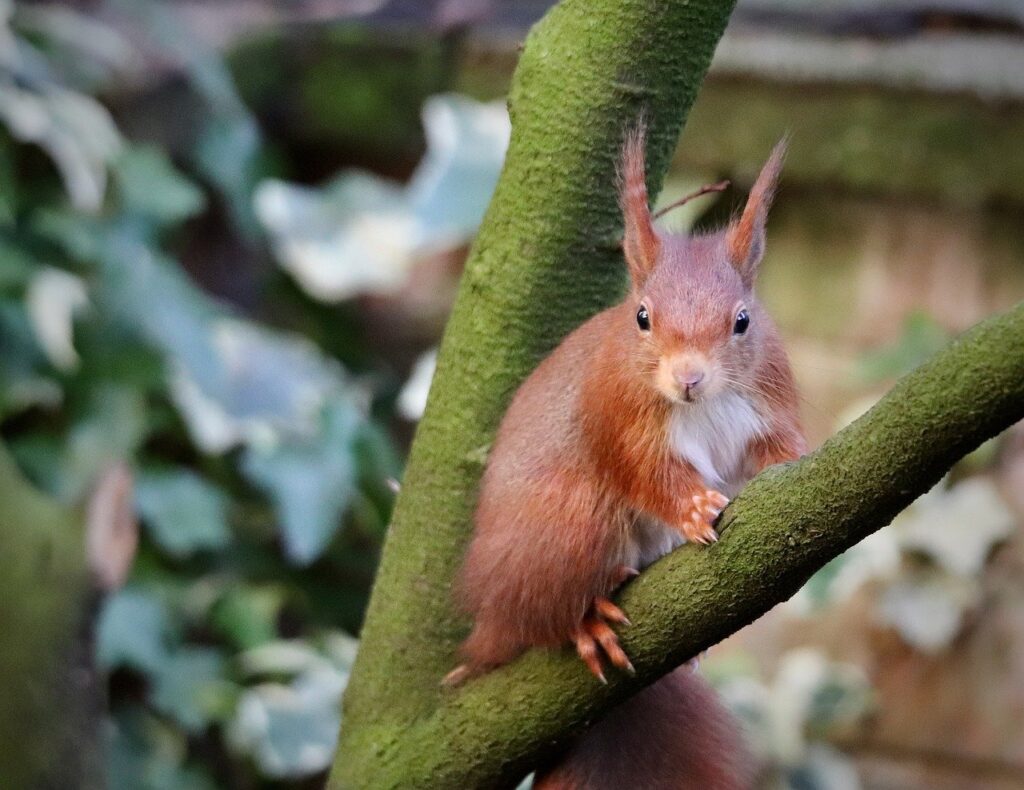Squirrels are among the most fascinating mammals, widely recognized for their agility, speed, and adaptability. Their swift movements and ability to climb effortlessly make them a captivating sight in forests, parks, and urban landscapes. Among various squirrel species, tree squirrels stand out due to their incredible climbing skills and their significant role in maintaining ecological balance.
Tree Squirrels and Their Habitat
Tree squirrels are the most common type of squirrels found across various habitats, from dense woodlands to city parks. They thrive in wooded environments, where they navigate tree canopies with remarkable ease. Their sharp claws and strong limbs help them grip onto branches and tree trunks, while their bushy tails provide balance and stability. These characteristics allow them to leap great distances, ensuring swift movement from tree to tree.
Squirrels build their nests, known as dreys, in the crooks of branches or inside tree hollows. These nests provide essential shelter and protection from predators and harsh weather conditions. Made from twigs, leaves, and moss, dreys are sturdy structures that serve as safe havens, especially during the breeding season and colder months.
Climbing Experts
One of the most distinctive features of squirrels is their unparalleled climbing ability. These mammals possess strong hind legs that propel them upward, allowing them to scale trees with incredible speed. Their flexible ankle joints give them an advantage, as they can rotate their feet 180 degrees to grip tree trunks securely. This adaptation enables them to descend headfirst from trees, a skill that sets them apart from many other climbing mammals.
Their sharp claws act like hooks, providing a firm grip on rough surfaces. This unique ability to climb and descend with precision makes squirrels highly adaptable to various environments, including urban settings where they skillfully maneuver around buildings, power lines, and fences.
Role in Nature & Wildlife
Squirrels play an essential role in maintaining ecological balance. As seed dispersers, they contribute significantly to forest regeneration. Their habit of burying nuts and acorns for future consumption inadvertently leads to the growth of new trees when they fail to retrieve all their hidden food. This natural process aids in forest expansion and sustains biodiversity.
Additionally, squirrels are an integral part of the food chain. They serve as prey for numerous predators, including birds of prey like hawks and owls, as well as terrestrial hunters such as foxes and wild cats. Their presence supports the survival of these species, highlighting their importance in the broader ecosystem.
Conclusion
Squirrels exemplify the beauty and resilience of wildlife. Their agility, intelligence, and adaptability allow them to thrive in diverse environments, from dense forests to bustling cities. Watching a squirrel leap effortlessly between branches is a reminder of nature’s wonders and the intricate balance of ecosystems. As crucial contributors to seed dispersal and a key part of the food chain, squirrels continue to play a vital role in maintaining the health of our natural world. Their ability to coexist with humans further showcases their remarkable adaptability, making them one of the most fascinating mammals of the wild.

